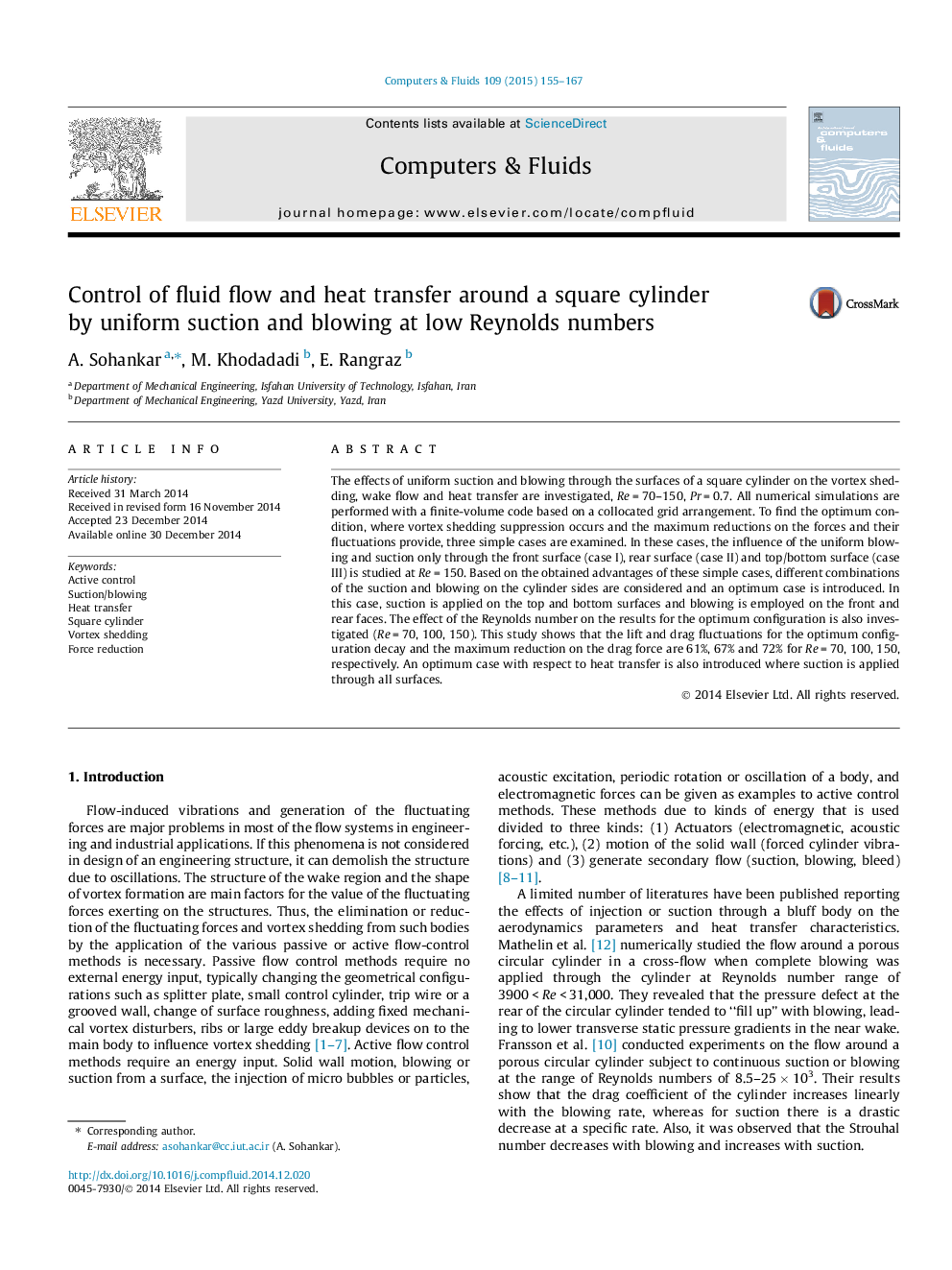| Article ID | Journal | Published Year | Pages | File Type |
|---|---|---|---|---|
| 761497 | Computers & Fluids | 2015 | 13 Pages |
•The effect of the suction and blowing through the walls of cylinder is studied.•Maximum reductions on the forces are achieved in the optimum case.•The suppression of the vortex shedding is occurred in the optimum case.•An optimum case with respect to heat transfer is also introduced.
The effects of uniform suction and blowing through the surfaces of a square cylinder on the vortex shedding, wake flow and heat transfer are investigated, Re = 70–150, Pr = 0.7. All numerical simulations are performed with a finite-volume code based on a collocated grid arrangement. To find the optimum condition, where vortex shedding suppression occurs and the maximum reductions on the forces and their fluctuations provide, three simple cases are examined. In these cases, the influence of the uniform blowing and suction only through the front surface (case I), rear surface (case II) and top/bottom surface (case III) is studied at Re = 150. Based on the obtained advantages of these simple cases, different combinations of the suction and blowing on the cylinder sides are considered and an optimum case is introduced. In this case, suction is applied on the top and bottom surfaces and blowing is employed on the front and rear faces. The effect of the Reynolds number on the results for the optimum configuration is also investigated (Re = 70, 100, 150). This study shows that the lift and drag fluctuations for the optimum configuration decay and the maximum reduction on the drag force are 61%, 67% and 72% for Re = 70, 100, 150, respectively. An optimum case with respect to heat transfer is also introduced where suction is applied through all surfaces.
